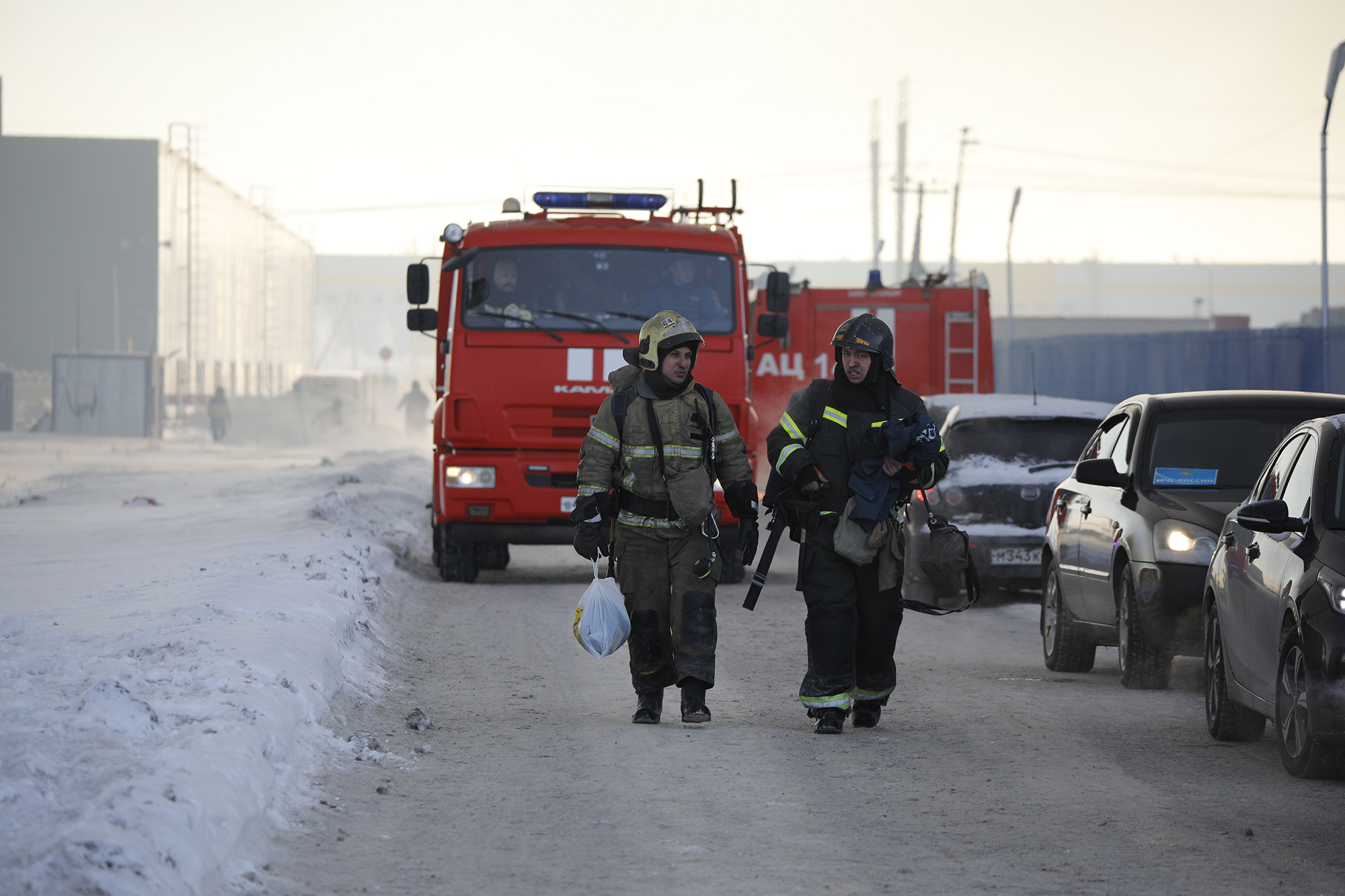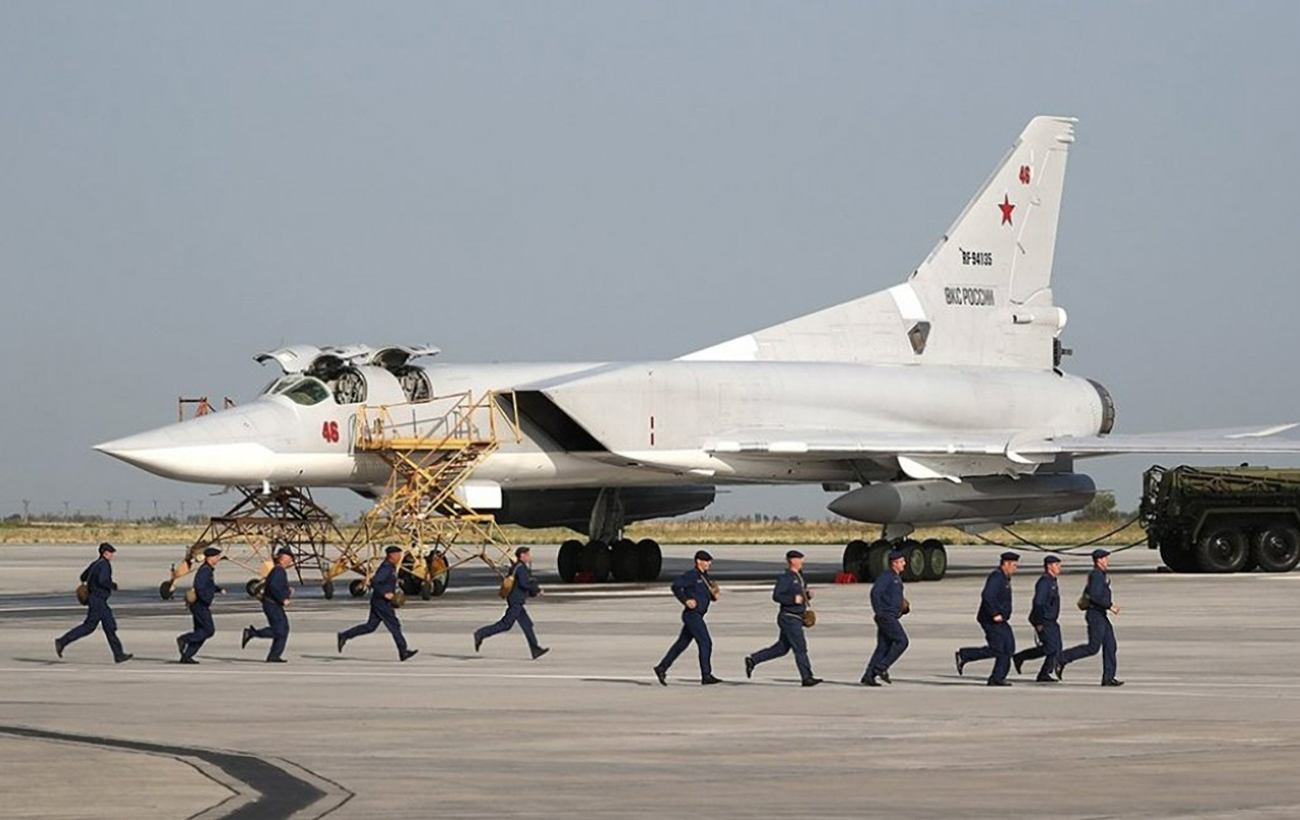Air bases, ports, refineries: Top successful operations of Ukraine's intelligence against Russia
 Ukrainian intelligence officer (photo: Getty Images)
Ukrainian intelligence officer (photo: Getty Images)
To mark the Day of the Defence Intelligence of the Ukrainian Defense Ministry (September 7), RBC-Ukraine has collected the most significant operations conducted with the participation of this agency. Over the year, intelligence officers have managed to damage or destroy Russian refineries, air bases, military-industrial complex facilities, and war criminals wherever they are.
Russia regularly fires long-range missiles and drones at Ukraine, striking throughout the country. For a long time, Ukraine has been unable to respond in kind and has been asking for long-range weapons from its Western partners.
Meanwhile, Ukrainian manufacturers began to develop their own long-range weapons. In a short period, the first samples began to hit strategic targets far to the rear of Russia. To counter an adversary with many times more money, resources, and people, the Ukrainian military is forced to resort to various ways to weaken the enemy's military potential not only on the front lines but also inside the country.
Russian refineries and oil depots explode and fail
The first explosions at oil refineries and bases in Russia began in early 2024. The Russian media periodically reported on blasts at refineries, ensuring that the consequences had been eliminated and the enterprises had not suffered. However, it was not possible to hide the results of the Ukrainian attacks for long, especially as their range grew exponentially.
For example, on January 31, Ukrainian intelligence officers successfully attacked the Nevsky Mazut oil refinery in St. Petersburg, which is just over 800 kilometers from Ukraine in a straight line. What is noteworthy about this operation is that they tried to shoot down the drone using the S-400 air defense system, which is perhaps the most effective air defense in service in Russia. The S-400 failed to hit the drone, and the UAV successfully crashed into one of the tanks, although propagandists reported that debris from the drone fell on the plant.
“It is significant that they used the S-400 to defeat our drones. It is very interesting how this Russian air defense system works, since after the drone was allegedly shot down, it still fell on the territory of our target,” a source in the special services explained.
The consequences were traditionally kept quiet - St. Petersburg governor Alexander Beglov called it an “incident” and said that no one was injured. The refinery workers were more specific in describing the consequences: while recording a video, one of the St. Petersburgers commented: “It blew up half the base, f*ck it”.

Emergency Situations Ministry in St. Petersburg (photo: Getty Images)
On March 23, the incident occurred in the Samara region (about 900 km from Ukraine), at the Novokuibyshevsk oil refinery, which is part of the Rosneft corporation. The refinery was one of the largest suppliers and main producers of jet engines, with a capacity of 8.3 million tons of oil.
Initially, the explosions were reported by local Telegram channels, the information quickly spread on social media, and later a comment from the authorities appeared. They said that the refinery had been attacked by drones, causing a primary oil processing column to catch fire. The next day, representatives of the refinery wrote that it was temporarily closed. The intelligence did not say what exactly hit the enterprise, limiting itself to a couple of words.
“We can only state that there was an incident there. Among other things, this facility is used for military purposes,” said Andrii Yusov, a representative of the intelligence.
On April 2, Ukrainian special services outdid themselves and attacked a primary oil refinery in the city of Nizhnekamsk (Tatarstan), which is more than a thousand kilometers from Ukraine. At the same time, drones attacked enterprises in Yelabuga and Nizhnekamsk. Later, it became known that in Yelabuga, a UAV hit a plant for assembling Iranian drones, which are called Geran-2 in Russia.
The plant was attacked by a Ukrainian long-range drone, the strike damaged the primary oil processing unit, which caused a fire. The refinery's capacity is 8 million tons of oil, which is 2.6% of Russia's total annual refining. The plant in Tatarstan is one of the five largest refineries in Russia.
The local authorities reported in their usual manner that there was no special damage in either Yelabuga or Nizhnekamsk, but local residents disagreed and posted videos of fires and destroyed houses. Sources in the intelligence told RBC-Ukraine that the special operation was possible thanks to joint actions of the intelligence and the Security Service of Ukraine.
“We continue to work systematically to ensure that Russia has fewer and fewer opportunities to finance its war of aggression against Ukraine. We will continue to cut off the oxygen to the gas station country to minimize the flow of petrodollars to Russia's war budget,” the source said.
.jpg)
Novoshakhtinsk oil refinery (photo: Russian media)
On April 20, another attack took place, this time on the Lukoil oil depot in the Smolensk region (about 300 km away). The governor of the region, Vasily Anokhin, confirmed that a “fuel and energy complex facility” had been hit, and eyewitnesses directly stated that drones had hit the Lukoil-CentreNefteProdukt base in Kardymovo.
Later, the Russian Defense Ministry said that the oil depot was attacked by about 50 drones, and all of them were shot down. However, the footage of the burning tanks with the sounds of explosions suggests otherwise. “Neft is burning worse, but Lukoil is burning f*cking good,” eyewitnesses commented on the video.
On August 28, Ukrainian reconnaissance drones attacked a Zenit oil depot near Kotelnich, Kirov region, which is again more than a thousand kilometers from the Ukrainian border.
“The attack on the oil depot was carried out by Ukrainian-made kamikaze drones,” a source in the intelligence told RBC-Ukraine.
Local Telegram channels reported a series of explosions and a fire that broke out in two tanks at the tank farm. “Zenit is an object of the enemy's military-industrial complex and provides fuel to the occupation forces of the Russian Armed Forces,” the source added.
This is not the entire list of attacks over the past year. Since January 2024, the Ukrainian Defense Forces have been regularly hitting the Russian rear, forcing the Kremlin to invent various ways to protect its refineries. Oil depot managers began to massively buy electronic warfare devices and protective shields, but the attacks continued almost every month.
In January alone, the special services attacked the Orelnefteprodukt oil depot in the city of Orel, the St. Petersburg oil terminal, and the Klintsy oil depot in the Bryansk region; in February, the Polyova oil depot in the Kursk region was hit, in March, the Pervyy Zavod refinery in the Kaluga region, the petroleum products plant in the Rostov region, the warehouse of the Mikhailovsky mining and processing plant in the Kursk region, and the Belgorodnefteprodukt in the village of Dolgoye, Gubkinsky urban district.
In April, two well-known operations took place: a strike on Lukoil in the Smolensk region and attacks on the Nizhnekamsk oil refinery and the Iranian drone assembly plant in Yelabuga. In May, explosions were reported at the Tuapse refinery in Krasnodar Krai, the Volgograd refinery in the Kaluga region, and the Ryazan refinery. In June, Ukrainian special services attacked an oil depot in the Belgorod region, and in July, an oil refinery in Ryazan, again in Tuapse, and an oil depot in Kalach-na-Donu in the Volgograd region.

Oil refinery in Nizhnekamsk (photo: Getty Images)
August was a fruitful month for the special services: Ukrainian drones attacked the Atlas oil depot in the Rostov region, the Vyatka base in the Kirov region, the Gubkinsky oil depot in Belgorod region, the Kavkaz oil depot in Proletarsk, and St. Petersburg.
In most cases, the DIU and the SSU do not officially speak about their involvement in the operations, but RBC-Ukraine's sources in the special services regularly report new strikes against the Russian oil industry and beyond. For a while, Ukraine's Western allies even tried to stop these attacks, claiming that they could affect the global economy. But these discussions died down soon.
Energy and port infrastructure
On March 2, a powerful explosion occurred at a power substation in Yekaterinburg, Russia. Eyewitnesses reported a bright flash and a roar in the area of the Kalininskaya substation. At first, the propagandists could not admit that it was the substation that exploded, and then claimed that there was a short circuit.
This enterprise supplied electricity to three Russian defense plants, therefore, as in the case of the refinery, it is a legitimate military target for Ukraine. The DIU reported that the Russians themselves were involved in the incident.
“There are truly concerned citizens in Russia who cannot put up with Putin's dictatorship and are doing everything possible to liberate their territory and country from the bloody Putin regime as soon as possible by the only legal means,” added Andrii Yusov.
Russia first attacked Ukraine's energy infrastructure on October 10, 2022. After almost two years of attacks on thermal power plants and transformer substations, the country's energy situation is quite critical. Eventually, Kyiv was able to respond. The first explosion occurred on January 9, 2024, at the Orelenergo enterprise - eyewitnesses reported that a drone “fell” on the building, and RBC-Ukraine sources added that it was the work of the DIU.
Later, it was Yekaterinburg, and then on April 2, an unknown blew up a power substation in occupied Sevastopol. Locals wrote about nighttime explosions and a blackout on half the city. The Russian governor of the city, Mikhail Razvozhayev, as is customary for Russians, immediately reported that the blast was a technological violation at the substation.
Then, on April 15, there was a large-scale drone attack on substations in eight regions of Russia as a result of a joint operation by the DIU, SSU, and SSO. On April 20, drones hit a power substation in the Bryansk region; and in July, an explosion occurred at two substations in the Belgorod region, shutting down an electrometallurgical plant in the Voronezh region.
Ukrainian special services also did not forget about the occupied Ukrainian and Russian ports. In December 2023, the Sea Oil Terminal was attacked in Feodosia. There were about 30 tanks with fuel on its territory, used by the Russian military. Later, Mark Krutov, a journalist for Russian Radio Liberty, published a satellite image after the attack, stating that “no visible damage was recorded.”
Air bases
Over the two and a half years of the great war, Ukrainians have unwittingly memorized the names of Russian air bases - Savasleyka, where MiGs take off, Morozovsk, and Olenya. When these words appeared not only in warnings from the Ukrainian Air Force but also in news reports about attacks, their mention began to evoke more than just negative emotions.
On August 16, Ukrainian forces attacked the Savasleyka air base in the Nizhny Novgorod region with a kamikaze drone. The result was encouraging: the drone destroyed a MiG-31K, two Il-76 aircraft, and damaged about five other Russian missile carriers. The Defense Ministry, as usual, claimed that the “incident” was over and that there was no significant damage, but RBC-Ukraine's sources say otherwise.
Another effective attack took place on July 27, when a Ukrainian drone struck an Olenya in the Murmansk region. As a result, Tu-22M3 strategic bombers were damaged. The same night, two airfields were attacked - in Engels, Saratov region, and in Dyagilevo, Ryazan region. The Russians are very sensitive to every strike on the air bases because their aviation is a tool for large-scale shelling of Ukraine. That is why they hide the planes and constantly relocate them. However, Ukrainian forces managed to find them.

Engels air base (photo: Getty Images)
This is confirmed by a series of attacks on places of accumulation. Among the most significant is the destruction of a Tu-22M3 bomber in the Stavropol Krai, a strike on the Engels-2 air base (minus three Tu-95MS and seven Russian servicemen), Yeysk (two Su-25s and four Russian servicemen were burned, and Su-30SM multi-role fighters were damaged, two military transport aircraft, and one BE-200 amphibious aircraft), an attack on the Khalino air base, which resulted in the liquidation of the leadership of the Russian 14th Air Regiment by Ukrainian special services, and even a strike on a Russian air base in Syria.
Objects of military-industrial complex
Ukrainian intelligence services have been equally successful in attacking the Russian military-industrial complex. For example, on April 17, to make it more difficult to repair damaged aircraft, the DIU drones struck the Gorbunov Aircraft Plant in Kazan. Russians produced and repaired Tu-22M and Tu-160M bombers there.
A source told RBC-Ukraine that the explosions at the plant occurred around 10 a.m. Before the explosions, a siren went off and workers began to leave the plant. Officially, local authorities did not report any damage, but Rosaviatsia said that the airports in Nizhnekamsk and Nizhny Novgorod were temporarily suspending their operations, which speaks volumes about the results of the special operation.
One of the landmark attacks occurred on November 11, when three of the four drones hit the Smolensk Aviation Plant, which, among other things, manufactures Kh-59 missiles. Another strike was made by Ukrainian intelligence officers against the Redkino plant near Tver. The enterprise manufactures unique products for the Russian space and aviation industries, including synthetic jet fuel decylene.

The enterprise in Yelabuga (photo: Russian media)
The list of attacks on the Russian military-industrial complex is quite long: attacks on the Tambov Gunpowder Plant, the Novolipetsk Metallurgical Plant (more than once), the Basalt plant in Tula, the Shcheglovsky Val plant, which produces Pantsir systems, and the Kotovsk Gunpowder Plant in Tambov (it was attacked twice). Each time, the picture is the same: while local authorities assure the Kremlin and the public that everything is fine and that the blast has not caused notable damage, the reality is different.
Traitors
A separate category of operations by the Ukrainian special services is the elimination of gauleiters, traitors, and war criminals. RBC-Ukraine's sources always add “They thought we wouldn't get them” when talking about the preparations and progress.
On February 3, 2024, in the city of Engels, Saratov region, the crew commander of a Tu-95 strategic bomber, 40-year-old Major Oleg Stegachev, was killed. On that day, he and his friend, the commander of the gun emplacements, Sergei, were standing near the garages when three shots were fired. Russian propagandists, who were apparently ordered to “put out the fire,” devalued the incident as much as possible, claiming that it was “some kind of domestic conflict.” All the reports of pro-Kremlin media failed to provide specific information on whether Stegachev survived.
Instead, the Ukrainian intelligence provided specifics on this matter. On the same day, it announced that Stegachev, a crew commander and pilot of one of the Tu-95s, had been killed. Russia never officially reported the death of its serviceman, nor did it refute it. The DIU did not talk about their involvement in the operation, but once again mentioned responsibility for war crimes: “We know your names, addresses, license plates, usual routes and habits.”
Two more cases occurred in the Russian-occupied territories. On March 6, an explosion rocked the occupied Berdiansk. Later it became known that a local collaborator, Svitlana Samoilenko, was killed in the explosion - she was blown up in a car. The DIU did not take responsibility but shared details of Samoilenko's biography.
After the capture of the city, the woman voluntarily cooperated with the Russians. For her zeal, she was rewarded with a position in the occupation administration. The so-called military commandant, Colonel Bardin of the Russian Armed Forces, appointed Samoilenko to the position of “deputy mayor”. Her husband and son also swore allegiance to the Russian army. Samoilenko herself was mainly engaged in intimidating and terrorizing Berdiansk residents, forcing them to participate in the “elections.”
***
The Ukrainian security and intelligence agencies do not directly assume responsibility for all operations that take place on enemy territory. The DIU, commenting on the incidents in Russia, notes that the main task of such special operations is to reduce Russia's military potential. Intelligence officers cut off logistics routes, hit Russian military-industrial complex enterprises, attack air bases, and create fuel problems in Russia.
“Fire is our main sanction, but we also use other methods of influencing the enemy: for example, cyber specialists of the Defense Intelligence of Ukraine have made significant achievements, working very fruitfully together with activists of the Ukrainian IT community in the aggressor's cyberspace,” said Andrii Cherniak, a representative of the DIU.
Among the most successful operations, the DIU mentions the elimination of aircraft - one A-50 long-range radar detection, a Tu-22M3 strategic bomber, as well as damage and destruction of a number of fighters, including the pride of Russia - Su-57.
The intelligence officers also stress the work at sea. With the help of the Magura V5 strike drone developed by Ukrainian specialists, the special services destroyed almost twenty Russian ships.
“If I evaluate the last year of the work of the Defense Intelligence of Ukraine, I can say that it was a period of scaling up non-standard, unexpected, and painful actions for the Muscovites (Russians mockingly - ed.). We firmly continue to move along this path,” Cherniak added.

